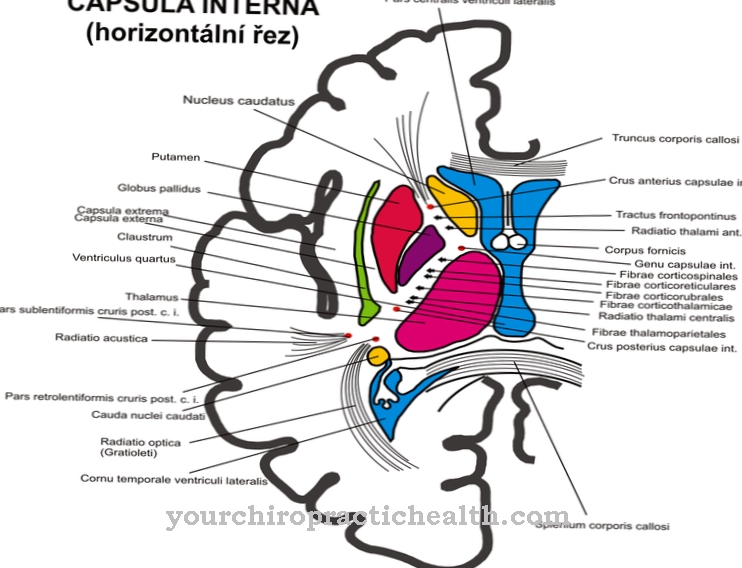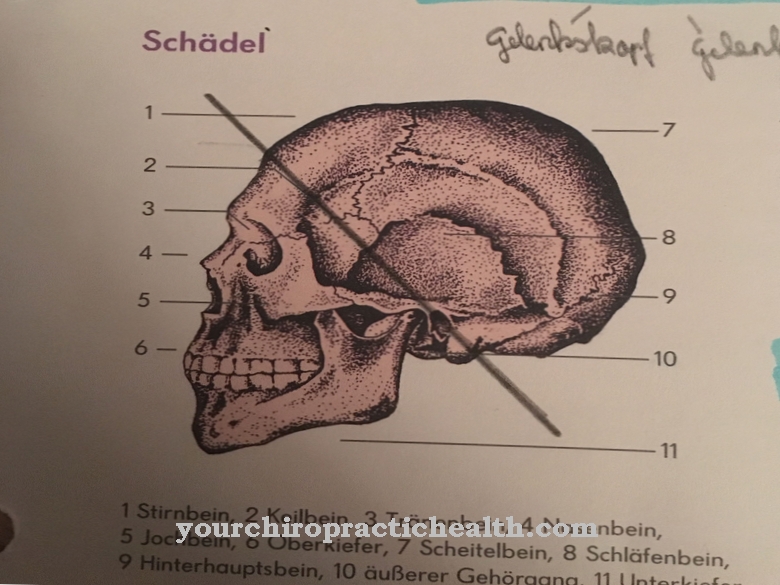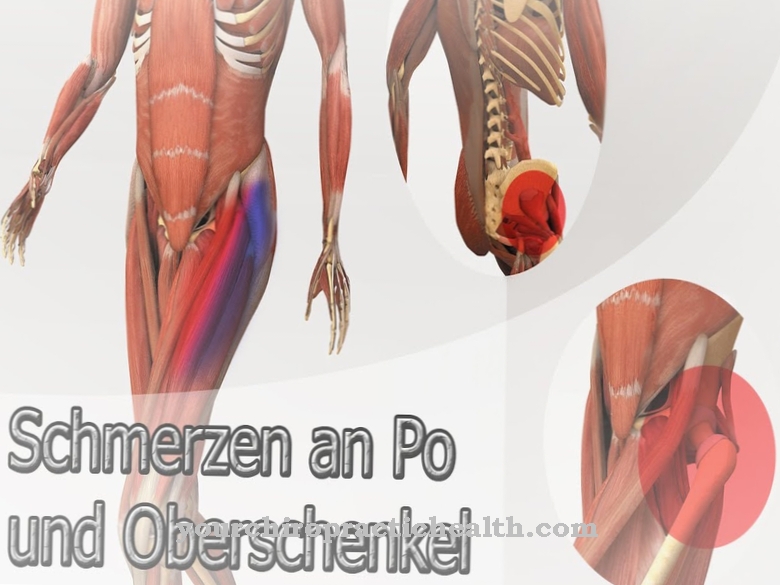The hip joint belongs to the central movement organs of humans.On the one hand, it helps the leg to move properly and, on the other hand, it ensures an elegant gait pattern. The use of the hip joint plays an enormous role in almost all daily activities. It bears a large part of the human burden and, in conjunction with all other joints, ensures great freedom of movement.
What is the hip joint?
The hip joint thus represents a ball joint in the classical sense. Joints of this type are characterized by the ability to perform circular movements in almost all directions. However, these are limited by the ligaments and muscles surrounding the joints. The restriction depends on the elasticity of the muscles.
Anatomy & structure
A hip joint is initially formed by the acetabulum, which sits in the pelvis and the femoral head that glides in it, which belongs to the femur.
The bone surfaces that come together are lined with a layer of cartilage. The pan is exactly where the iliac, pubic and ischial bone meet. These two components are held together by a tape connection that runs from the head of the femur to the center of the acetabulum. In addition, the joint is surrounded by a strong capsule and other strong ligaments above it. The muscles are divided into flexors and extensors depending on their function.
The most important flexors are the hip-lumbar muscle, the tailor's muscle, and the four-headed thigh muscle. The extensors include the gluteal muscles and the ischium and lower leg muscles. The middle and small gluteal muscles also contribute to the movements.
Function & tasks
The muscles surrounding the joint enable rotational movements. This allows the leg to be swung forwards and backwards in a stretched shape, as well as being lifted and lifted. More precisely, the leg can be through the hip joint move on three axes.
When lifting and lifting, the leg has a range of motion of 130-140 °. On the other axis, it can be spread by 30-45 ° and even spread over the adjacent leg by 20-30 °. When bent and raised, it can be rotated in a radius between 30-50 °, inwards and outwards.
When walking, running or jumping, one side balances the other. This is also the case if one of the two sides of the hip is restricted by an acute or chronic clinical picture. The normal gait arises from the fact that the leg on one side takes over the function of the supporting leg, and the other side is led past it.
Illnesses & ailments
Often, discomfort in the form of pain, movement of the Hip joint restrict. One of the most common diseases of the hip is osteoarthritis - the so-called joint wear and tear. The cartilage surfaces are damaged in the appropriate places due to incorrect, i.e. excessive, stress or due to aging.
If this happens over a long period of time, the cartilage can be completely broken down in various areas. There the bones rub against each other and can cause severe pain in the entire area of the hip joint. If pain of this kind occurs, relief of the damaged joint is often sought. However, this can lead to increased stress on the opposite hip joint.
Furthermore, the hip joint arthrosis can also be permanently damaged by an existing malposition in the hip joint itself. In the case of severe osteoarthritis, a joint replacement with a prosthesis, which replaces the worn joint parts, can be considered. Before that, however, a sufficient diagnosis in the form of x-rays or perhaps even a jointoscopy should be carried out.
Hip dysplasia, on the other hand, is essentially a developmental disorder. The hip socket on the pelvis is steeper and flatter. This creates the risk that the femoral head will slide over the edge of the socket and the hip joint will dislocate.
In summary, the hip joint offers very complex fields of application due to its relatively simple structure. There is no doubt that it is very stable and robust. Nevertheless, it is important that the hip joint is not subjected to permanent incorrect loading. Because the consequences of long-term overuse are not directly visible, but are gradual and therefore often noticeable too late.













.jpg)

.jpg)
.jpg)











.jpg)